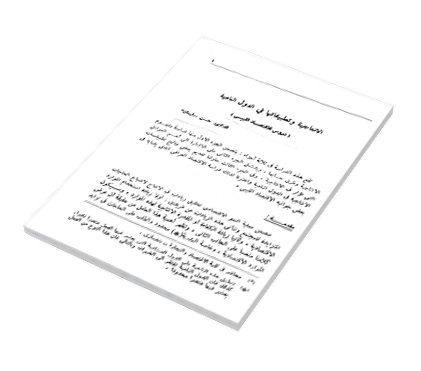PRODUCTIVITY IN DEVELOPING COUNTRIES (LESSONS FOR LIBYA
DOI:
https://doi.org/10.37376/deb.v5i2.3069Keywords:
PRODUCTIVITY IN DEVELOPING COUNTRIES (LESSONS FOR LIBYAAbstract
The study has, for convenience, been divided into three parts. The first part deals with the analysis of the productivity concept and presents a critical assessment of the main methods. This gives the Middle Eastern reader a broad, though concise, framework of the arious conceptual and methodological aspects of productivity.
The second part sums up very briefly the purpose of productivity measurement and the main factors affecting it.
The third and final part deals with the application of productivity in developing countries ; the case study being that of the Iraqi economy by major sectors. The conclusions drawn from this study are of great value for countries where the oil sector plays an important role as a leading sector and has a big share in the national income. Libya is a good example, and presents a case similar to that of Iraq in many
Avays.
Lecturer of Economics,
Seconomics, Faculty of Economics and Commerce, Benghazi
BUSINESS REVIEW
THE LIBYAN ECONOMIC AND BUSINESS
88
In Iraq detailed statistical data are lacking. So utilised in the productivity measurement of the total eco sectors are not very reliable, especially from year to year of the total economy and main sectors also fails to re important facts ; an overall average, like all aggreg affected by one sector which has little to do with actual total vity. In fact, this is the case in Iraq ; the oil sector, which : foreign companies, contributes to more than 20 per ce national income and to more than 50 per cent of the grose a product. Thus, the overall figure of the total economy includi would give a misleading picture of the productive preformance economy. Some of these limitations, however, have been overe adopting the following line of analysis.
Some of the day stal economy and main
vear. Measurement
la to reveal many 11 aggregates, may be actual total producti.
which is run by per cent of the the gross domestic
my including oil
First, the productivity performance of the Iraqi economy and main sectors was carried out during the two sub-periods 1953-58 and 1958-63 which are referred to as tl and t2 respectively ; the annual arithmetic average during each period was calculated, which reduces the impact of changes from year to year. Secondly, the performance of the Iraqi economy excluding oil was estimated,
The main types of productivity ratios chosen for the present purposes are : (1)
- Labour Productivity. This is arrived at by dividing the index of output at 1956 factor cost prices by the index of employed labour force during the year.
(1)
A measurement of total productivity of the Iraqi economy excluding agricu ture, through the application of the Cobb-Douglas production function, . been attempted. But unfortunately it was not possible to arrive at pos results in this respect. The values of b and (
6 1) and a were as to 1.018023, (-0.018023) and 2.77604 respectively; the value or r was v The inconsistencies in the results cannot be easily explained. Howe main factors may be mentioned. First, in the calculations of the pl function estimates of capital stock should be used, while in our can figures of gross investment were used, as figures of capital stock available. Secondly, the index of output may not be properly calc not weighted properly with respect to base year prices.
e or r was 0.720337. ained. However, two ons of the production
In our calculations capital stock were not properly calculated, i.e
Downloads

Downloads
Published
How to Cite
Issue
Section
License
Copyright (c) 2022 Dirasat in Economics and Business

This work is licensed under a Creative Commons Attribution-NonCommercial-NoDerivatives 4.0 International License.







